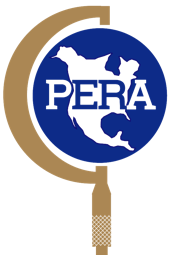Im going to also save the page for future reference on my HD, in case this disappears like everything else on the internet:P Anyway, here is the reason for all this

----------------------------------------------------
One of my favorite things is to start the day with a simple inquiry from a PERA member. Not long ago I had one such day and the question was, "Will cylinder head casting number 24507487 interchange for 10218170 on a 3.4L Chevrolet engine application? Our cylinder head department has compared the two and they appear identical."
The research information for SourcePERA indicated cylinder head casting 10218170 began in model year 1996 and was used through 2000. That cylinder head casting 24507487 came on the scene in late model year 1999 and the information to this point was simply, "Yes, they do interchange."
That was when it struck me: Nothing is EVER that simple anymore! So some further in-depth research began.
Serious networking with many others and putting hands on the two cylinder heads began. Looking at the two castings in question, putting them side-by-side, studying the intricacies of each one resulted in agreeing with the original assumption that they are, in fact, the same.
Next we determined whether both the cylinder head assemblies? parts are the same. If there are different part numbers are the parts actually different or might it just be a different OEM provider? We have seen part numbers for the same component change because the OEM changed its supplier. We did notice that the valve stem seal part numbers were different, and as it turns out the valve stem seals were different as well.
So going back and looking at the two 3.4L (also used on the 3.1L) castings, we did find that there was a difference in the valve stem seal area of the valve guide. Both cylinder heads in question use what seal manufacturers refer to as a "top hat" style seal. The "top hat" seal holder is just that, and in this case the seal and the holder do separate. To the best of our knowledge you cannot purchase the seal separately, so when purchasing new valve stem seals for these applications they come as an assembly, with the seal installed into the "top hat" (see Photo 1).
The later of the two heads #487 uses a PM (powder metal) valve guide, and the seal area diameter is .552˝. The inside of the metal ?top hat? seal holder for this cylinder head is .541˝ resulting in a .011˝ interference fit (see Photo 2).
The earlier head #170 uses a cast-iron valve guide, and the seal area diameter is .514˝. The inside of the metal ?top hat? seal holder for this cylinder head is .502˝ resulting in a .012˝ interference fit (see Photo 3).
That said we should be done, but the story does not end there. It seems that there is a wide spread pattern of using the small seal on the large guide. That is going to result in .050˝ interference fit and most of you may think that it would be impossible to install. Not so. Why? Because the "top hat" seal holder housing has indents that create the interference fit (see Photo 1).
In fact the "top hat" housing for the two seals actually appears to be the same for both. However, when the smaller diameter valve guide seal assembly (heavier indent) is installed on the larger diameter valve guide the "top hat" has the potential to distort to the point that oil can get past and under the seal (not past the valve stem). Once that happens the oil gets behind/under and into the "top hat" and from there it is simple physics. On the intake side, since there is vacuum you may have oil consumption on a single cylinder with no logical explanation (see Photo 4).
In talking with different seal manufacturers, what we have just described above does happen!
So the engine builder tip in this case would be use the correct seal on the correct cylinder head (valve guide) and there should be no problem or warranty issues, and life will be good.
One last tip, according to our research the smaller guide seal fits model year 1993-2000, 3.1L VIN M&J and model year 1996-1999, 3.4L VIN E. The larger guide seal is used in 1999-2000, 3.1L VIN J and 2000-2001, 3.4L VIN E. As you can see there is overlap so use caution, and good luck.
Special Note: This article would not have been possible without the help of Rich Larson from Fel-Pro, Richard Hix from Gopher Motor Rebuilding, Chip Helderman from Jasper Engines and a special thanks to Doug Anderson from Grooms Engine for his insights.
The Production Engine Remanufacturers Association (PERA) offers SourcePERA Software, a revolutionary electronic information system that identifies engines and their components by make, model and year-specific applications based upon AAIA standard lookup tables. Casting numbers, specific notes and photos provide for an absolute definitive identification. For more information about PERA or SourcePERA call 847-439-0491; or visit www.pera.org.


Comment